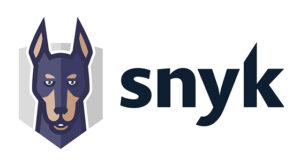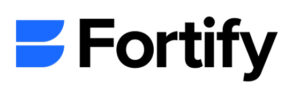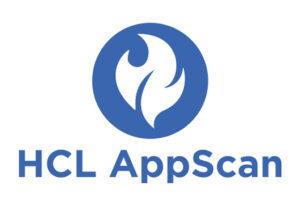Top 15 SAST Tools in 2025
Status
answered
Status
answered
Shipping fast in 2025 doesn’t have to mean shipping risky code. Static application security testing (SAST) tools help you find security issues before code is merged. When you add them to your IDE and CI/CD, they provide quick, repeatable feedback to developers and help security teams set policies without slowing releases.
Below, you’ll learn what SAST tools do, why they’re useful, and find a clear, accurate look at 15 leading options for 2025, what each one does well, where it fits best, and a few things to watch out for.
A SAST tool scans your source code (and sometimes bytecode/binaries) without running the application. It builds internal models of the code (syntax trees, data- and control-flow) to:
SAST does not scan your open-source licenses or third-party dependency vulnerabilities; that would be the responsibility of software composition analysis (SCA). Many vendors sell both, often under one platform, but they’re different scan types.
Speed note: Some scans are near-instant in the IDE, while others take longer in CI for large repositories. Either way, they’re designed to fit into pull/merge request checks and pipeline gates.

SonarQube (self-hosted) and SonarQube Cloud (SaaS) integrate code quality and security rules with SAST and taint analysis for many popular programming languages. Sonar’s AI CodeFix now suggests code changes for detected issues and is generally available across supported Sonar editions.
Why teams like it
Best for: Teams that want one tool for quality + security with smooth PR checks.
Notes: Sonar documents language coverage (including modern C/C++ and many others). Check your language’s support level in the docs.

Semgrep provides fast, developer-friendly static analysis with easy rule writing in YAML. You can start with thousands of community and vendor rules, then add your own to match your code patterns. Semgrep supports more than two dozen languages and continues to expand.
Why teams like it
Best for: Teams that want control, write or tweak rules, keep scans fast.
Notes: The docs show supported languages and rule syntax (including how to compose patterns).

Snyk is a developer-first SAST with real-time feedback in IDEs and PRs. It uses the DeepCode AI engine for detection and can suggest or even apply fixes (Snyk Agent Fix) in supported setups.
Why teams like it
Best for: Teams that already use Snyk or want fast IDE scans that feel “native.”
Notes: Snyk Code is for first-party code; Snyk Open Source handles dependency/license scanning. If you need both, Snyk’s platform covers them.

Mend offers both SAST (Mend SAST) and SCA on a single platform. Mend SAST focuses on developer workflows and has added AI-assisted remediation and integrations that show SAST results alongside other scan types.
Why teams like it
Best for: Orgs with heavy open-source usage that also want first-party code scanning in one place.
Notes: Mend rebranded from WhiteSource and now positions SAST and SCA under an “AI-Native AppSec” umbrella.

An all-in-one AppSec platform aimed at simpler onboarding. It typically bundles SAST, SCA, IaC, and secrets scanning on a single dashboard. This can be a good way for small teams to get started without having to piece together multiple tools.
Why teams like it
Best for: Startups and small teams who want a unified view and minimal setup
Notes: Think of Aikido primarily as an integrated platform; individual scan depth can vary by language and rule set.

OX focuses on orchestrating application-security signals across the pipeline; think of it as an ASPM layer that can ingest and manage results from SAST and other scanners. It’s about centralizing policy, visibility, and risk, especially at enterprise scale.
Why teams like it
Best for: Enterprises that already run multiple scanners and want a single “pane of glass.”
Notes: Treat OX as your control plane. It can connect to (and, in some editions, run) scanners, but the value lies in the orchestration rather than the SAST engine itself.

Built-in SAST for GitLab CI. You include a template in .gitlab-ci.yml and get automated scans, MR comments, and dashboards. GitLab also offers Advanced SAST for deeper cross-file taint analysis in several languages.
Why teams like it
Best for: Teams already on GitLab who want native, automated checks.
Notes: GitLab’s SAST analyzers wrap open-source scanners (like Semgrep for many languages). You can customize rules or extend coverage with custom rulesets.

An enterprise SAST with broad language coverage and deep CI/IDE integrations, delivered as part of the Checkmarx One platform. It emphasizes accuracy and correlation to reduce noise for large codebases.
Why teams like it
Best for: Mid-to-large enterprises needing robust scanning at scale.
Notes: Check language and framework support in the vendor’s matrix when you plan adoption.

A long-standing SAST offering with broad integrations (IDEs, CI/CD) and enterprise reporting. It’s part of a larger Veracode platform that also covers DAST and SCA, with updated docs and data sheets released throughout 2025.
Why teams like it
Best for: Enterprises with multi-language, multi-team environments.
Notes: Veracode publishes frequent SAST updates and research (e.g., the 2025 State of Software Security). Check their updates page for the latest language and feature changes.

A precise SAST engine known for catching tricky bugs in C/C++/Java and more. It slots into CI and IDEs and is often used where correctness and accuracy are critical (safety- and security-sensitive code).
Why teams like it
Best for: Large teams with complex, performance-critical code.
Notes: Synopsys provides detailed language support and integration guides; review those when planning rollouts.

Fortify static code analyzer (SCA, Fortify’s term for its static analyzer) is OpenText’s SAST, available on-prem or as part of its cloud offering. Fortify has active 2025 releases, IDE plugins, and CI templates.
Why teams like it
Best for: Enterprises in regulated spaces that need proven, auditable tooling.
Notes: OpenText documents 2025 feature updates and integration options (including plugins for major IDEs).

A comprehensive AppSec suite with a dedicated SAST product (AppScan Source) and AppScan on Cloud. Features include AI-assisted triage (IFA/ICA), IDE and CI integrations, and broad language support.
Why teams like it
Best for: Large organizations that want SAST plus other testing types under one umbrella.
Notes: HCL highlights >30 languages, AI-assisted findings, and CI/IDE integrations. Review the product pages and documentation for the latest capabilities.

Cycode (an ASPM platform) introduced its own SAST capabilities after acquiring Bearer in 2024 and has continued to evolve the engine through 2025. The platform also covers SCA, IaC, and pipeline security.
Why teams like it
Best for: Organizations standardizing on an ASPM platform with built-in scanners.
Notes: The Bearer acquisition (completed April 30, 2024) expanded Cycode’s SAST and API discovery capabilities.

Contrast is best known for IAST (Contrast Assess) and RASP (Contrast Protect), and it also offers a SAST product (Contrast Scan). The value for many teams is seeing both static and runtime context to prioritize fixes.
Why teams like it
Best for: Teams that want context from running apps (IAST) plus SAST findings.
Notes: If your priority is “what’s actually exploitable in prod,” Contrast’s runtime products can help you tune SAST priorities.

A focused static analyzer for C/C++/C#/Java with strong rules, good IDE integration, and mappings to standards like CWE, SEI CERT, and MISRA. It’s popular in teams that live in the C/C++ world.
Why teams like it
Best for: Developers working mainly with C-family languages who need deep, standards-aligned checks.
Notes: The vendor details IDE plugins and CI usage; you can run it locally, in CI, or via plugins.
You don’t need a giant rollout to get value. Start small: enable SAST on one repo, fix the top issues, tune rules, and then scale. If you already have an AppSec platform, see if its SAST module meets your needs before adding a new tool. If not, a focused engine (such as Coverity or PVS-Studio for C/C++) can coexist with your platform and provide results to your dashboards.
The tools above are all solid choices in 2025; the right one depends on your languages, team size, and whether you prefer an “all-in-one” or “best-of-breed” approach. Whichever route you take, keeping SAST results visible to developers in IDEs and PRs and wiring scans into CI from day one will give you the biggest win.
